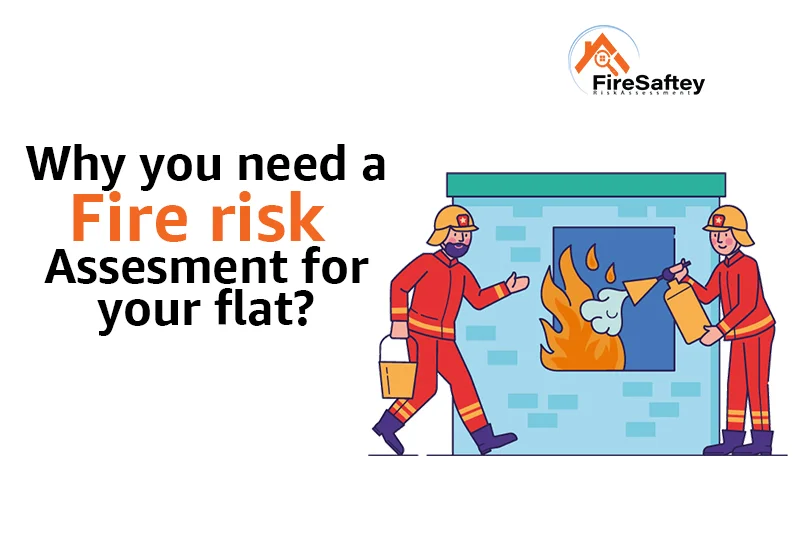Fire safety is a crucial consideration for all residential properties in the UK. Many landlords and tenants frequently ask when is a fire risk assessment not required for flats, particularly in single dwellings versus shared buildings. Fire risk assessments aim to identify potential hazards, evaluate the risk to residents, and recommend preventive measures. Understanding the circumstances where an assessment is legally unnecessary helps both landlords and tenants remain compliant while focusing on essential safety practices.
The legal framework in the UK, including the Fire Safety Order 2005 and the Fire Safety Act 2021, governs fire risk assessments. Knowing when is a fire risk assessment not required for flats ensures property owners and managers allocate resources efficiently and maintain safe living conditions. This guide explores exemptions, obligations, and best practices for landlords and tenants, offering clarity on compliance and practical fire safety measures.
Understanding Fire Risk Assessments in Flats
A fire risk assessment is a thorough evaluation of a property to determine potential fire hazards and the risk they present to occupants. It typically examines communal areas, stairwells, corridors, escape routes, and fire detection systems. By identifying hazards early, landlords can implement safety measures that protect residents and reduce the likelihood of fire-related incidents. Understanding when is a fire risk assessment not required for flats helps property owners distinguish between properties that legally need assessments and those that are exempt.
The responsibility for conducting a fire risk assessment generally falls on the “responsible person,” often the landlord or managing agent. Even if individual flats are safe, shared areas like corridors and lobbies require evaluation due to the increased risk from multiple residents. Knowing the legal requirements ensures landlords are aware of their obligations, while tenants can better understand their rights and expectations regarding fire safety.
Situations When a Fire Risk Assessment is Not Required for Flats
A key scenario in which when is a fire risk assessment not required for flats applies is single private dwellings. These are properties rented or occupied by a single family or individual where there are no shared communal areas. In these situations, the fire risk is confined to a single household, making a formal assessment legally unnecessary. Landlords can focus on providing basic fire safety measures without the obligation of a full risk assessment.
Flats without communal facilities also fall into this exemption. If there are no shared hallways, stairwells, or entryways, a formal assessment is typically not required. Despite the exemption, it is still recommended to maintain fire safety basics such as smoke alarms, fire extinguishers, and clear escape routes. Understanding when is a fire risk assessment not required for flats ensures landlords and tenants know their responsibilities without neglecting safety.
Situations When a Fire Risk Assessment is Required

While it is essential to know when is a fire risk assessment not required for flats, it is equally important to understand when assessments are mandatory. Blocks of flats with communal areas such as stairwells, lobbies, and shared corridors must have regular evaluations. These areas pose a higher risk as multiple households share the space, increasing the likelihood of fire spreading and impacting multiple residents.
Houses in Multiple Occupation (HMOs) with five or more occupants also require formal assessments. Shared kitchens, bathrooms, and other facilities increase fire risk, making compliance with the law essential. Landlords must ensure that these evaluations are conducted by competent personnel and are reviewed periodically. Understanding the contrast between exempt and non-exempt properties helps landlords comply and protect residents effectively.
Key Considerations for Landlords and Tenants
Even when a property qualifies as exempt, knowing when is a fire risk assessment not required for flats does not eliminate the need for vigilance. Landlords still have a duty of care to ensure safety within their properties. Regularly checking smoke alarms, maintaining fire doors, and educating tenants about escape procedures are all proactive measures that enhance safety even in exempt properties.
Tenants should also take an active role in fire safety. They should understand how to operate fire alarms, locate exits, and report potential hazards. Effective communication between tenants and landlords can prevent incidents and improve overall safety. Awareness of when is a fire risk assessment not required for flats allows tenants to focus on personal safety while trusting landlords to manage legal responsibilities where applicable.
How Often Fire Risk Assessments Should Be Reviewed
Fire risk assessments for properties with shared spaces should be reviewed regularly to ensure ongoing safety. Changes in occupancy, renovations, or the introduction of new hazards may require reassessment. Knowing when is a fire risk assessment not required for flats ensures landlords only conduct formal reviews where necessary, saving time and resources without compromising safety.
Documentation of fire risk assessments is essential. Maintaining accurate records of assessments, reviews, and corrective actions helps landlords demonstrate compliance if queried by authorities. A well-maintained log also provides reassurance to tenants that safety is taken seriously. Even for exempt properties, routine checks on fire safety devices and escape routes contribute to a safer living environment.
Practical Tips for Maintaining Fire Safety in Flats
Even in properties where when is a fire risk assessment not required for flats, it is prudent to follow basic fire safety practices. Installing working smoke alarms in key areas, maintaining clear exit routes, and checking electrical systems regularly can significantly reduce risks. Small measures often prevent more serious incidents and improve peace of mind for residents.
Regular communication between tenants and landlords is also essential. Reporting hazards promptly and adhering to safety guidelines ensures all parties contribute to a safer environment. Understanding when is a fire risk assessment not required for flats should not lead to complacency; fire safety is an ongoing responsibility for everyone involved.
Conclusion
Understanding when is a fire risk assessment not required for flats allows landlords and tenants to focus resources where they are most needed. Single private dwellings are generally exempt, while blocks of flats, HMOs, and shared buildings require formal assessments to comply with UK law. Prioritising fire safety, even in exempt properties, ensures residents remain protected.
Landlords should maintain fire safety measures proactively, and tenants should remain aware of escape routes and alarm systems. Knowledge of legal exemptions, combined with practical safety measures, helps create a secure environment in all types of flats. Fire safety is a shared responsibility that benefits everyone.
FAQs
Do single flats always require a fire risk assessment?
Are tenants responsible for reporting fire hazards?
What constitutes a communal area in a block of flats?
How does the Fire Safety Act 2021 affect flats?
Can landlords voluntarily perform a fire risk assessment if not required?
What are the penalties for failing to conduct a required assessment?
How often should shared buildings have their fire risk assessment reviewed?
Are HMOs with fewer than five residents exempt from assessments?
You may also read: What Does Building Insurance Cover in Flats? UK Guide for Leaseholders



